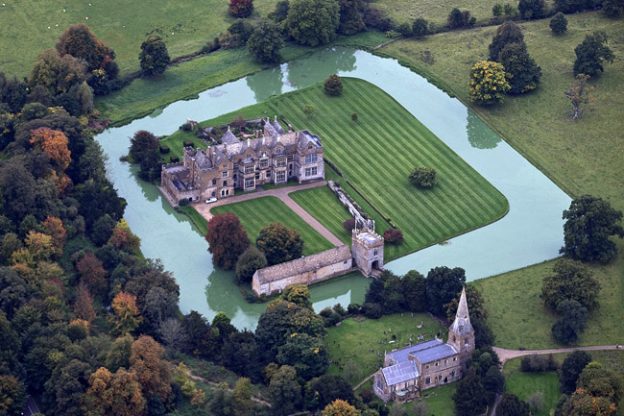This month the Society’s talk was on “Oxfordshire Castles”, given by Trevor Rowley. He gave us a comprehensive and often witty survey of their history.
Castles in the usual sense did not exist in England much before the Norman Conquest. Prehistoric ‘castles’ were defensive areas which were centres of population rather than castles.
After the Conquest William the Conqueror set about consolidating his power. In many county towns, he established ‘Mottes” (earth mounds with wooden fortifications on the top) as centres of control. Later on these Mottes acquired ‘Baileys’, enclosures where followers of the new lords were housed. Power was distributed mainly to those who were allies of William in his invasion of England, and it was they who now owned the castles and hence the power.
By 1250 the whole of England and Wales was covered with ‘Motte and Bailey’ castles. Trevor Rowley then described Oxford Castle. The Motte was built within 5 years of the Conquest, and sited in a position to control the town and areas to the west. It was a ‘motte and bailey’ type of castle, and on the top of the Motte it had a Keep with a stairway down to a well, but there was an anomaly, which still exists – St George’s Tower. Its date is not known. It could be Saxon, and might have been built in about 1050. It was used as a church, and it has a crypt built in the Norman style. During the time of the civil war between Stephen and Matilda it was first held by Matilda, but seized by Stephen, and Matilda had to escape across the frozen river in disguise, and retreat to Wallingford. Medieval kings did not like Oxford Castle. They much preferred “Beaumont Palace”, which had been built just outside the town boundary (near present-day Beaumont Street). Later, Woodstock Palace was preferred. During the Middle Ages not much drama occurred at Oxford Castle until the Civil War, when Charles I had his HQ at Christchurch. After his defeat, the Castle was ‘reduced’, much of its defences were destroyed, and it lay derelict until being converted to a prison, which it remained until recent times. Excavations in the Bailey area have turned up much of interest, including many skeletons. Some of these were the decapitated bodies of executed prisoners.
Wallingford Castle had been an extremely important castle built in a strategically vital stretch of the river Thames. William had failed in his first attempt to take London (after a battle on London Bridge). So he rode west along the river as far as Wallingford. Here he consolidated his political power, negotiating the surrender of Winchester. It was a royal castle until the Civil War, when it saw action and was besieged by Fairfax’s forces. Later, like Oxford Castle it was ‘reduced’. It was a very grand castle, but little now survives. Less well-known castles included Deddington Castle. This castle in the north of the county saw action during the Conquest. It was owned by Bishop Odo, nephew of William. He was the second richest man in the country, and features in the Bayeux Tapestry. The castle was Odo’s HQ, a secure base for Normans in hostile surroundings.
Chipping Norton Castle. This castle was owned by the Fitzalans, and was a centre of defence in the area. The Fitzalans held property on the Welsh border, and in Arundel. Middleton Stoney Castle. There is not much visible here, but in the middle of the park there is a Motte. It went out of use in the 1200’s. Excavations show that there was a Roman farmstead on the site.
Boarstall Tower. Now in the hands of the National Trust. it was built at a time when castles had ceased to be purely military structures, but this was deliberately given defensive-like features, like castellations. All that is left now is the gatehouse.
Broughton Castle. Mainly Tudor. Owned by William of Wykeham, Bishop of Winchester, it was built to look as if it was well fortified. The owners were on the Parliamentary side in the Civil War, so it was not ‘reduced’, and continued in the same family’s hands. It is often used in Films and TV series.
Shirburn Castle. Contemporary with Broughton Castle. It was owned by the Lords of Macclesfield, but is now empty due to a dispute. Blenheim Palace and Woodstock Castle. The latter had been a major royal residence, and was used by Henry II to conduct his affair with “Fair Rosamund”. It was situated in the grounds of Blenheim Palace near the bridge over the lake, and was removed when the Palace was built. The stone was used in the building of the Palace.
Trevor Rowley finished with a picture of Highclere Castle, built in the 19th century by the Caernarvon family and partly designed by Charles Barry who designed the Houses of Parliament. It is not in Oxfordshire, but it has many features that may recall the design of medieval castles like Oxford and Wallingford.

